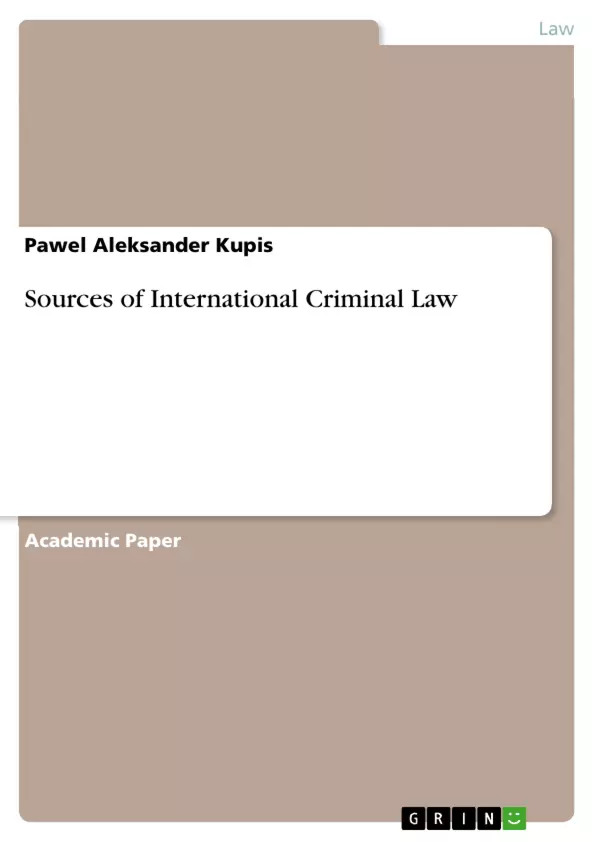The sources if international criminal law are diverse, frequently not immediately obvious, and complicated by a number of different factors. This makes the mission of identifying and applying international criminal law particularly difficult, needing a lot of effort and energy. Thus, it is important to identify the sources of international criminal
law in order to determine what weight should actually be attached to international treaties, international custom, documents, materials and judicial decisions, which are commonly referred to in the context of individual criminal responsibility in international law.
Table of Contents
- Sources of International Criminal Law
- Introduction
- Article 38 of the International Court of Justice Statute
- International Conventions
- International Custom
- General Principles of Law Recognized by Civilized Nations
- Judicial Decisions and Teachings of Publicists
- International Treaties
- Customary International Law
- Individual Criminal Responsibility
- Nuremberg Principles
- The International Law Commission's Formulation
- The International Criminal Tribunal for the former Yugoslavia's View
- General Principles of Law Recognized by Civilized Nations
- Judicial Decisions
Objectives and Key Themes
This text provides a comprehensive analysis of the sources of international criminal law. It explores the historical development of these sources, examining the role of treaties, customary law, general principles of law, and judicial decisions in shaping international criminal law. The text also considers the concept of individual criminal responsibility, which is central to the effective enforcement of international criminal law.
- The evolution of international criminal law
- The sources of international criminal law
- The role of treaties and customary law
- The concept of individual criminal responsibility
- The significance of general principles of law and judicial decisions
Chapter Summaries
The text begins by outlining the historical context of international criminal law, highlighting the importance of individual responsibility in enforcing international law. It then delves into Article 38 of the Statute of the International Court of Justice, examining the four main sources of international law: international conventions, international custom, general principles of law recognized by civilized nations, and judicial decisions.
The following chapters explore each of these sources in greater detail. The chapter on international treaties discusses the “pacta sunt servanda” principle and provides examples of key treaties related to international criminal law, such as the Geneva Conventions and the Rome Statute of the International Criminal Court. The chapter on customary international law examines the conditions for the formation of customary norms and highlights the role of state practice in shaping international law.
The text then focuses on the concept of individual criminal responsibility, tracing its development from the Nuremberg Trials to the establishment of international criminal tribunals and courts. It examines the Nuremberg Principles, which while not a binding source of international law, are considered an important step in the development of international criminal law. The text also explores the application of general principles of law recognized by civilized nations in closing gaps in the international legal system.
Finally, the text discusses the role of judicial decisions in international law. While judicial decisions are not considered a primary source of international law, they hold persuasive authority and have played a significant role in shaping the content and application of international law.
Keywords
The main keywords and focus topics of this text include: sources of international law, international criminal law, international conventions, customary international law, general principles of law, judicial decisions, individual criminal responsibility, Nuremberg Principles, international tribunals, international courts.
- Citation du texte
- Pawel Aleksander Kupis (Auteur), 2012, Sources of International Criminal Law, Munich, GRIN Verlag, https://www.grin.com/document/288051



